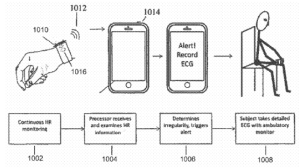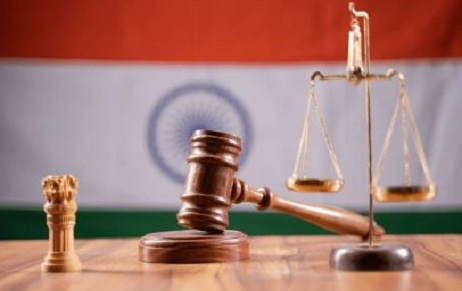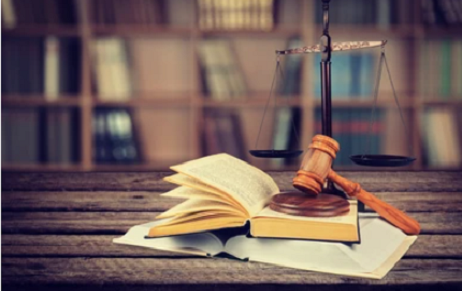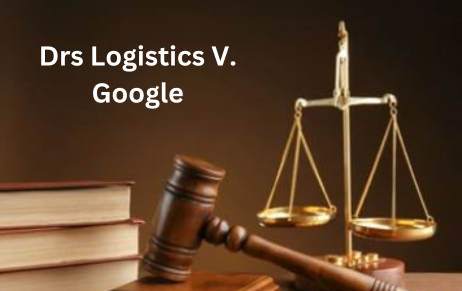ABSTRACT The project employs doctrinal research methods, i.e. secondary research which involves writing on basis…
Apple Wins Patent Suit Against Alivecor Over Portable Ecg Tech
INTRODUCTION
This suit was before Patent trial and Appeal board between the Apple Inc. (Petitioner) and the AliveCor, Inc. (Patent Owners) over the U.S. Patent No. 9,572,499 owned by AliveCor.
In this case, Petitioner has filed a Petition for an inter partes review of claims 1–20 of U.S. Patent No. 9,572,499 B2. Board after taking into account the arguments of both parties and evidence presented, Board determined that there was a reasonable likelihood that petitioner would prevail in demonstrating unpatentability of at least one challenged claim of US’499 patent and thus board instituted this inter partes review as to all challenged claims. In toto, Board has held following:
“Petitioner has demonstrated by a preponderance of evidence that claims 1-20 of US’499 are unpatentable”
ASSERTED GROUNDS OF PATENTABILITY
Petitioner asserted following grounds of unpatentability:
| Ground | Claims Challenged | 35 U.S.C § | Reference(s) / Basis |
| 1 | 1-6, 10-16, 20 | § 103 | Shmueli (WO2012/140559, publ. Oct. 18, 2012.), Osorio (U.S. 2014/0275840, publ. Sept. 18, 2014.) |
| 2 | 7-9, 17-19 | § 103 | Shmueli (WO2012/140559, publ. Oct. 18, 2012.), Osorio (U.S. 2014/0275840, publ. Sept. 18, 2014.), Hu 1997 (Hu et al., 44(9) “A Patient-Adaptable ECG Beat Classifier Using a Mixture of Experts Approach,” IEE Transactions on Biomed. Engineering 891–900 (1997).) |
In support of Patentability challenge, Petitioner’s relies on, inter alia, the Declaration of Dr. Bernard R. Chaitman, M.D. where as Patent owner relied on declarations of Dr. Igor Efimov, Ph.D.
WHAT IS THIS PATENT ALL ABOUT?
US’499 Patent relates to medical devices, systems, and methods for detecting cardiac conditions, including cardiac arrhythmias. Parameters such as heart rate (HR), heart rate variability (R-R variability or HRV), and heart rate turbulence (HRT) may be determined. These parameters may be further analysed to detect and/or predict one or more of atrial fibrillation, tachycardia, bradycardia, bigeminy, trigeminy, or other cardiac conditions.
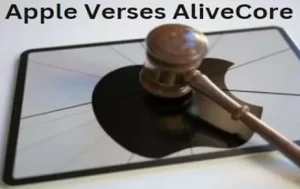
The collected data may also be analyzed using machine learning algorithms to, for example, determine appropriate trigger thresholds, detect and predict health conditions, or provide a heart health score. “The machine learning based algorithm(s) may allow software application(s) to identify patterns and/or features of the R-R interval data and/or the raw heart rate signals or data to predict and/or detect atrial fibrillation or other arrhythmias.”
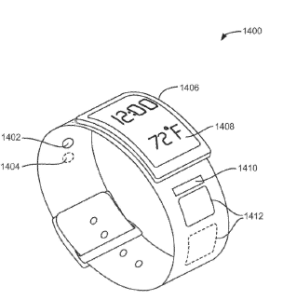
Figure 10 shown below further discloses another embodiment involving a body worn device where it illustrates a method for monitoring a subject to determine when to record an electrocardiogram (ECG).
Petitioner challenges claims 1-20 of which Claim 1 and 11 are independent Claims. Three key prior art references were discussed in details which were:
- Shmueli (WO2012/140559, publ. Oct. 18, 2012.),
- Osorio (U.S. 2014/0275840, publ. Sept. 18, 2014.); and
- Hu 1997 (Hu et al., 44(9) “A Patient-Adaptable ECG Beat Classifier Using a Mixture of Experts Approach,” IEE Transactions on Biomed. Engineering 891–900 (1997).)
ANALYSIS
Board then put out the analysis of the cited references w.r.t challenged claims. Board recited the following:
Legal Position
Legal position on this matter where Board cited following:
- In an IPR, the petitioner has the burden from the onset to show with particularity why the patent it challenges is unpatentable [Harmonic Inc. v. Avid Technology, Inc., 815 F.3d 1356, 1363 (citing 35 U.S.C. § 312(a)(3)]
- Further, Board relied on KSR International Co. v. Teleflex Inc., judgement where Supreme Court summarized the four factual inquiries set forth in Graham v. John Deere Co., 383 U.S. 1 (1966) that are applied in determining whether a claim is unpatentable as obvious under 35 U.S.C 103 as follows:
- determining the scope and content of the prior art;
- ascertaining the differences between the prior art and the claims at issue;
- resolving the level of ordinary skill in the art; and
- considering objective evidence indicating obviousness or non-obviousness, if present.
- Board on concept of obviousness relied on Sakraida v. Ag Pro, Inc., 425 U.S. 273, 282 (1976)) and quoted:
“[W]hen a patent ‘simply arranges old elements with each performing the same function it had been known to perform’ and yields no more than one would expect from such an arrangement, the combination is obvious”
Further, relied on Pfizer, Inc. v. Apotex, Inc., 480 F.3d 1348, 1364 (Fed. Cir. 2007) where Court held that “obviousness cannot be avoided simply by a showing of some degree of unpredictability in the art so long as there was a reasonable probability of success”.
Level of Ordinary Skill in Art
Board in determining the level of skill in the art relying on cases of Custom Accessories, Inc. v. Jeffrey-Allan Indus., Inc., 807 F.2d 955, 962 (Fed. Cir. 1986); see also Orthopedic Equip. Co. v. United States, 702 F.2d 1005, 1011 (Fed. Cir. 1983) cited following factors for consideration which were:
- type of problems encountered in the art,
- the prior art solutions to those problems,
- the rapidity with which innovations are made,
- the sophistication of the technology, and
- the educational level of active workers in the field.
Petitioner’s contention in regard to person skilled in Art
Petitioner asserts that a person of ordinary skill in the art would have been someone with at least a combination of Bachelor’s Degree (or a similar Master’s Degree, or higher degree) in an academic area emphasizing health science, or a related field, and two or more years of work experience with cardiac monitoring technologies (e.g., as a cardiologist). Petitioner further contends that “additional education or industry experience may compensate for a deficit in one of the other aspects of the requirements stated above.”
Patent Owner’s Contention in regard to person skilled in Art
In its Preliminary Response, Patent Owner took the position that one of ordinary skill in the art would have had “specialized engineering skills” including “a degree in biomedical or electrical engineering (or an equivalent), and/or extensive experience working with tools for detecting cardiac conditions.
Patent Owner argues that board should reject originally proposed definition in light of, for example, Petitioner’s proposed definition before the ITC, which required an engineering background and “at least two years of relevant work experience designing wearable devices and/or sensors for measuring physiological signals.
Observations of Board
Board applied modified definition, which was consistent with Petitioner’s representation before the ITC. For the purpose of this proceeding, a person of ordinary skill in the art may be a member of an interdisciplinary team including persons with backgrounds in electrical engineering, mechanical engineering, biomedical engineering, computer science, and/or cardiology, and having at least two years of relevant work experience designing, using, or analyzing data from, cardiac monitoring devices.
Board noted that Dr. Chaitman as well as Dr. Efimov neither experts possesses advanced skills in computer science, or more specifically, machine learning. Further, board observed programming skills may be relevant to the implementation of certain of the challenged claims, however, they are not prerequisites for qualifying a person of ordinary skill in art.
In light of the above, Board determined that Dr. Chaitman and Dr. Efimov are both qualified to testify as to the understanding of a person of ordinary skill in the art and experts on a particular topic of both parties would be weighed in light of the strengths and weaknesses of their respective background.
CLAIM CONSTRUCTION
Board interpreted claim “using the same claim construction standard that would be used to construe the claim in a civil action under 35 U.S.C. 282(b).” 37 C.F.R. § 42.100(b).
Under this standard, board construed the claims “in accordance with the ordinary and customary meaning of such claim as understood by one of ordinary skill in the art and the prosecution history pertaining to the patent.” & relied on Nidec Motor Corp. vs Zhongshan Broad Ocean Motor Co. Ltd where it was held that terms in controversy need to be construed to extent necessary to resolve the controversy.
On basis of above understanding, Board applied plain and ordinary meaning to all claim terms. Board evaluated both the assertions based on the citations found and concluded:
Ground 1: Obviousness over Shmueli and Osorio
Observations of Board: Board held that the combination of Shmueli and Osorio discloses or renders obvious the arrhythmia detection recited in the challenged claims, and that one of ordinary skill in the art would have been motivated to combine the cited references with a reasonable expectation of success of arriving at the claimed invention. Patent Owner does not specifically challenge any other element under Ground 1. Having reviewed the argument and evidence of record, Board found that Petitioner has shown by a preponderance of the evidence that claims 1–6, 10–16, and 20 are unpatentable as obvious in view of Shmueli and Osorio.
Ground 2: Obviousness over Shmueli, Osorio, and Hu 1997
Observations of Board: Board found that Hu 1997 discloses or renders obvious the “machine learning” element of claims 7–9 and 17–19. Board found that the combination of Shmueli, Osorio, and Hu 1997 discloses or renders obvious all elements of claims 7–9 and 17–19, and that one of ordinary skill in the art would have been motivated to combine the cited references with a reasonable expectation of success. Having reviewed the argument and evidence of record, Board found that Petitioner has shown by a preponderance of the evidence that claims 7–9 and 17–19 are unpatentable as obvious in view of Shmueli, Osorio, and Hu 1997.
FINAL DECISION OF PATENT TRIAL AND APPEAL BOARD
Board relying on the preponderance of evidence, that claims 1-20 are unpatentable under § 103 as obvious in view of Shmueli and Osorio, with or without Hu 1997.
Further, Board ordered that claims 1-20 of US’499 patent are held to be unpatentable.
CONCLUSION:
This case is one of the classic cases of § 103 objection i.e. obviousness. The main parties in the case were Apple Inc. and the AliveCor. AliveCor was the owner of the patent US’499 which relates to medical devices, systems and methods for detecting cardiac conditions, including cardiac arrhythmias such as a body-worn devices for detecting the occurrence of arrhythmias using a combination of ECG and PPG electrode. Apple challenged the claims of AliveCor’s patent US’499 on the grounds of unpatentability under 35 U.S.C § 103 i.e. ground of obviousness in view of 3 cited prior art references. Board highlighted the legal position on this section, level of ordinary skilled in art, comparison of claims with cited references. Observing all these factors, Board found the AliveCor’s patent claims too obvious to be patented. Thereby Apple won this battle against AliveCor over ECG device.
Author: Tushar Bawa, a legal Intern at Khurana & Khurana Advocates and IP Attorneys, in case of any queries please contact/write back to us via email to [email protected] or at IIPRD.


